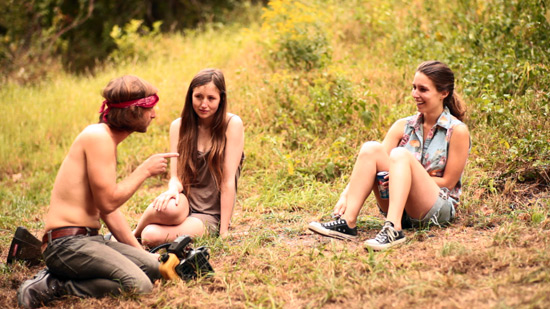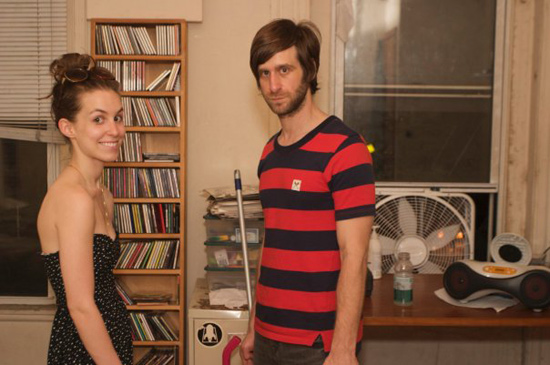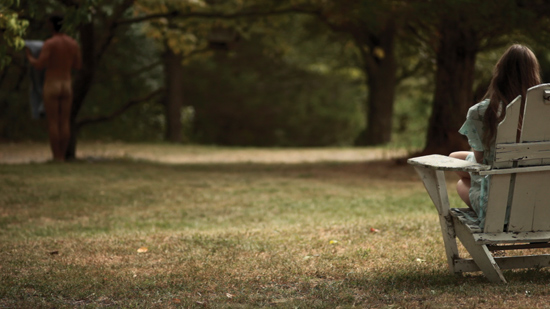Sometimes it seems like there’s more talk about movies getting made than there is actual activity. The question of how we all learn and remain aware of the actual practice of day will always loom large. Since knowledge and access (i.e. connections) will always be key commodities in the pursuit of getting it done, conferences that provide the two are always a lure.
Fortunately we were given the opportunity to cover 11th Annual New York International Film & TV Summit, organized by BNA / ATLAS, and were able to dispatch one of our own forward thinkers to the proceedings. Gary reports back to us, in this first of two parts.
I did something odd last week: I went back in time and attended the kind of conference I hadn’t been to in years. These days I’m best known for documentary films and books released by my Disinformation and True Mind companies, but when I first met Ted Hope (who kindly invited me to attend the conference in his stead), I used to go to exactly this kind of conference as a young pup entertainment lawyer looking to meet experienced TV and movie execs.
The conference was the 11th Annual New York International Film & TV Summit, organized by BNA / ATLAS, and indeed it was loaded with exactly the kind of indie film royalty a striving young producer might want to meet: New York luminaries such as Richard Lorber, Steve Beer, Josh Braun, Ira Deutchman and many others, as well as some west coast execs like eOne’s John Morayniss, Nick Meyer, and Peter Kaufman. But at a thousand dollars a head to attend, there weren’t too many filmmakers in the room (notable exception, one of Ted’s students at NYU Film School whom Ted got a free pass for and whose short was accepted by Sundance this year). The majority of attendees were lawyers and accountants, which made me laugh when all of the Movie Magic software door prizes were given out to people who clearly weren’t about to produce their own film (I know because mine was one of two hands raised when a panelist asked if anyone had produced a film).
The other “Back to the Future” moment for me was when I asked what the conference hashtag was so that I could tweet about the panels. Not only was I met with a completely blank stare, but it turned out that a hashtag would have done me no good anyway, as there was no wifi and AT&T doesn’t have enough bandwidth in the Marriott Marquis Times Square to access email, let alone tweet. I don’t think that was too much of an issue for anyone else, though: unlike, say, a panel at SXSW where everyone has a laptop/tablet/smartphone out and is littering the social mediasphere at will throughout every presentation, I didn’t see anyone using anything more advanced than a ballpoint pen with which to record the proceedings.
OK, so that set the stage. As to the actual content of the conference, on day one there was a major focus on tax incentives, with Executive Director of the New York State Film & TV office, Pat Kaufman delivering the keynote address. Pat is well loved and for good reason: she reported that already in 2011 there are 82 films, 17 pilots and 23 TV series participating in New York State’s tax credit program with $1.5 Billion in activity, versus $1.4 Billion for all of 2010. (Fun trivia fact about Pat: she is married to Lloyd Kaufman, of Troma Entertainment fame, and has appeared in some of his unique films.)
From Pat’s address we went right into a morning of detailed information on first domestic and then international tax incentive programs. Also present were more than a few state and city film office representatives, including West Virginia, Greater Philadelphia, and Puerto Rico, with a special mention for the extremely charming new Film Commissioner for the Dominican Republic, Ellis Perez.
There were two clear takeaways for anyone sitting through the panels: (1) you’re an idiot if you don’t access tax incentive funding for your movie or TV pilot, to the extent it’s available (not so much for docs); and (2) don’t even think about trying to work your own way through the ever-changing thicket of programs — hire specialists (if you don’t know who, take a look at the speaker list for these panels — they’re all very good at what they do and worth the fees they charge).
The afternoon’s focus was geared towards the financing of films. First thing to note: the presenters were focused on movies that have budgets in the millions of dollars, have established sales agents, etc. Plenty of excellent information was on offer (e.g., Q: Which banks are active in film finance right now? A: Comerica, Chase, City National, Bank of America, Bank Leumi, Barclays, Union Bank), as well as some dry wit (Q: What is the typical role of equity in film finance? A: from Lucie Guernsey of Woodland Bay Capital: “To pull out at the last minute”). The finance panel really got into gear once Roy Salter of the Salter Group financial advisory firm let loose with the gem that if you just want to get something made, go to Europe where there are lots of state funds, ministries and others willing to fund art. If it’s money your after, though, then he and the other panelists have lots of advice.
Salter was actually pretty bullish on films as an investment. He noted that while private equity finance largely went away in the wake of the 2008 financial meltdown, there’s plenty of new investors from Abu Dhabi, India and elsewhere in Asia who are cognizant that movies are not like any other asset category and unlike almost everything else, they have provided net positive returns over the last decade. I don’t think he was talking about the microbudget kind of films that my company and surely those of many of the readers of HopeForFilm make though.
The real shocker for me regarding finance was a trend reported by Tom Leo of Sheppard Mullins: apparently there are numerous scams being attempted with supposed financiers telling producers that they can access a $100 million financial instrument and give the producer $5 million for his or her film … if only the producer can come up with $2.5 million now. A few years ago I published a book called Scamorama, about those Nigerian 419 email scams; I couldn’t believe that sophisticated movie producers were falling for these, so I turned to the person sitting next to me, David Oliver of City National Bank, who confirmed that indeed his firm had received lots of calls about bogus letters of credit in connection with film finance. Moral of the story: if it seems too good to be true…
Some other sage advice from Day One of the conference:
• Established indie producers can be your beard (veteran LA attorney Peter Kaufman, explaining why it’s often advantageous to bring on board the type of producer who can have a “halo effect” on your efforts to get the film made.
• Be generous with talent perks like business class air travel — a few thousand dollars spent on air fares can yield tens or hundreds of thousands of dollars of publicity value if your star shows up for the film festival premiere or similar junket (Wilder Knight, Esq. of Pryor Cashman).
• The only barrier to entry for filmmakers attempting self distribution is getting exhibitors to return calls (Ira Deutchman, who went on to say that’s why theatrical bookers are still so important and that the self distributed films that do well are the ones with defined niche audiences, those that have a thousand “true fans.”)
• Sales agents are more honest now (Jonathan Sachar of Indiefcc.net, who likened some sales agents in the not so distant past to the real estate agent who’ll tell you he can sell your house for two million dollars just to get the listing, when every other broker says it’s worth a million).
• Saying your movie is on Netflix and iTunes is like saying your name’s in the phone book (Ira Deutchman on why theatrical release is still worth pursuing for its subsequent marketing value, even though it may be a loss leader).
[Plenty more zingers like these in the second part of my blog. Thanks for reading part one!]
— Gary Baddeley








